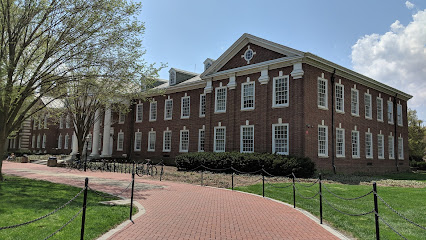
About Us

Department History
The Department of Physics and Astronomy (DPA) traces its ancestry back to a small teaching department which began in 1920. By the early 1960s the department had expanded into a major research department with the construction of Sharp Laboratory and the development of a full-scale doctoral program. DPA steadily grew during the next two decades, acquiring an international reputation as a small but strong department emphasizing experimental condensed matter physics. The other important area of research in DPA has been atomic, molecular, and optical physics. The early opportunities for Ph.D. research in these areas afforded our graduates diverse employment prospects in industrial, government, and academic labs.
The arrival of the Bartol Research Institute in the late 1970s transformed developing research areas in astrophysics and elementary particle physics into full-fledged programs for Ph.D. students. In May 2000, the Institute was integrated into the University as a unit in the College of Arts and Sciences. In July 2005, it merged with the Department of Physics and Astronomy, becoming a research center within the Department.
Department Facts
- Department faculty: 37 (the combined total of full-time, part-time, and other faculty at all ranks is 40)
- Undergraduate physics majors: 86
- Graduate students in the physics program: 106
- Graduate student admission: 15 students were accepted out of 256 applicants for fall 2024
- Research expenditures: $7 million per year
- Department location: Sharp Lab
- Department chair: Edmund Nowak
- Bartol Research Institute director: Jamie Holder

Sharp Laboratory
Sharp Laboratory is located on the south east corner at the intersection of Delaware Avenue and S. College Avenue, houses the Department of Physics & Astronomy, Bartol Institute and the office of the Delaware Space Grant Consortium.
Named in 1963 by resolution for Hugh Rodney Sharp, Trustee of Delaware College and the University of Delaware from 1913 until 1968, alumnus and major benefactor of the University.
The Physics Library is a branch library of the University of Delaware Library, and serves students, faculty and staff in Physics and related disciplines. Located on the second floor of Sharp Laboratory, the Library provides a specialized collection of books and reference materials in physics and related disciplines as well as access to all electronic resources, e-journals, e-books and databases provided by the University of Delaware Library. The Physics Library also provides reference and electronic access to course materials and homework solutions for physics and related courses at the University of Delaware.
Visitor Information
The University of Delaware campus is located in Newark, Delaware, which is about 20 minutes away from Wilmington, an hour from either Philadelphia or Baltimore, two hours from Washington D.C., and two and a half hours from New York City.
The College’s Commitment to Diversity, Equity and Inclusion
Diversity, equity, and inclusion are significant parts of the University of Delaware's College of Arts and Sciences values and goals. The college's commitment to these values is not just evident in its student body but also in its faculty, staff, and curriculum, ensuring a fully inclusive experience. Through this steadfast dedication to diversity and inclusivity, the college continues to enrich its educational offerings, allowing each student to benefit from a wide array of viewpoints and experiences.

